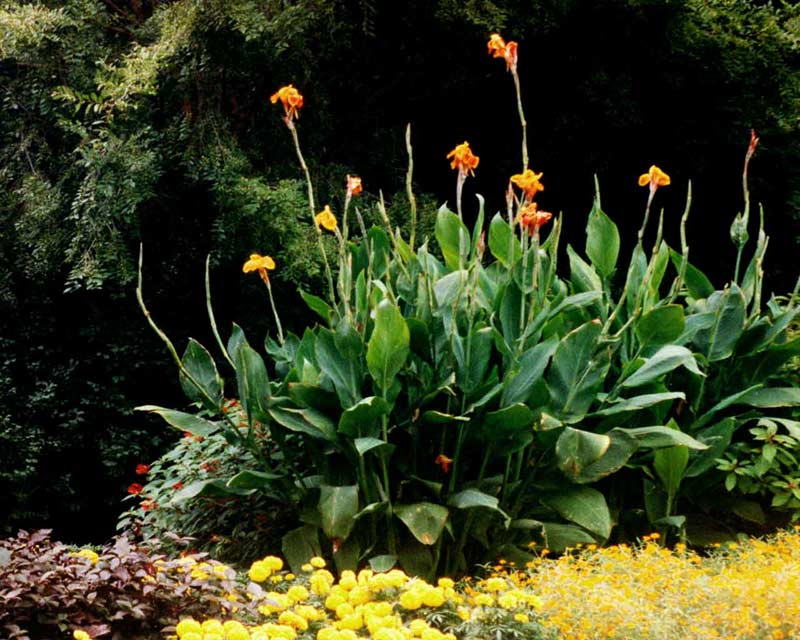peace
 Sahaja Yoga was founded in1970 by Shri Mataji Nirmala Devi. Shri Mataji developed a method by which people en masse could get their Self-realisation, in which they feel total peace and tranquillity, absolute oneness with nature and the universe and complete psychological integration. Self-realisation has been called “individuation” by Carl Jung, and “self-actualisation” by modern psychologists and psychiatrists. Previously, people wanting to obtain their Self-realisation had to spend many years with a guru in the Himalayas going through many hardships and privations in order to cleanse their chakras to reach this height of spiritual attainment.
Sahaja Yoga was founded in1970 by Shri Mataji Nirmala Devi. Shri Mataji developed a method by which people en masse could get their Self-realisation, in which they feel total peace and tranquillity, absolute oneness with nature and the universe and complete psychological integration. Self-realisation has been called “individuation” by Carl Jung, and “self-actualisation” by modern psychologists and psychiatrists. Previously, people wanting to obtain their Self-realisation had to spend many years with a guru in the Himalayas going through many hardships and privations in order to cleanse their chakras to reach this height of spiritual attainment.
Shri Mataji’s method, called “Sahaja” which means “spontaneous” and “born with you” takes just ten minutes and is very joy-giving. Self-realisation takes us into a state of meditation known as “thoughtless awareness” in which we are awake and alert but are not thinking and are not affected by what is happening in our environment.
During Self-realisation the residual life force which resides in every human being in the sacrum bone at the bottom of the spine rises up through the limbic area to the fontanelle bone at the top of the head. The limbic area is the “old” brain which controls our heartbeat, our digestion, our breathing – all the work done by the autonomic nervous system. This limbic area becomes enlightened and works more effectively, calming us down and normalising and slowing down our physical processes, so that everything functions more smoothly and efficiently.
After Self-realisation, in thoughtless awareness, we become more perceptive and are able to feel subtle differences in the state of our own being and in the beings of others. Shri Mataji calls this new awareness “vibratory awareness”. We are able to feel the state of our chakras on our fingertips. Each of the seven chakras corresponds to a different finger or part of the hand. When there is a problem with a particular chakra it manifests as a tingling or heat in the corresponding position on the hand. Problems with the chakras, known as blockages, can be cleared with simple techniques using the five elements. When the chakras are cleared the heat is replaced by a feeling of coolness.
Each chakra has a different sphere of influence in our physical, emotional, mental and spiritual lives. Any imbalance or blockage in a chakra will manifest as a problem in one of those four areas. For example, the chakra at the throat, known as the Vishuddhi chakra, corresponds on a physical level to all the organs governed by the major nerve plexus in the throat, that is, the neck, sound-box, mouth, tongue, teeth, lips, inside the ears and hearing, as well as the shoulders and fingertips, as the nerves from this plexus also travel down the arms to the fingers. So, a problem with this chakra could manifest as a physical problem with any of these organs, or it may manifest as an emotional, mental or spiritual problem.
On the emotional level, this chakra is concerned with feeling connected to others, self-esteem and feeling guilty. On the mental level it is concerned with feeling respect for others and being diplomatic. On the spiritual level it is concerned with maintaining purity in our relationships with others.
In effect, with Sahaja Yoga we are able to feel imbalances in our systems and to correct them before they get to the stage of developing into major illnesses. If we already have an illness Sahaja Yoga is helpful in the treatment of the illness and in alleviating symptoms. Sahaja Yoga also helps us to see ourselves clearly, to see our faults and failings as well as our positive traits, and allows us automatically to become better people, get rid of our bad habits and addictions and resolve our problems.
All of this information is freely available at Sahaja Yoga beginners’ classes. Everyone can achieve Self-realisation and the state of thoughtless awareness, and everyone can start to feel the vibrations on their hands and learn to decode the signals. According to the wishes of the founder, Shri Mataji, Sahaja Yoga is always taught free of charge.
Kay Alford
For information about Sahaja Yoga programs, please follow the link below:
http://www.sahajayoga.com.au/level_1/Free%20Lessons.shtml
 The founder of Sahaja Yoga, Shri Mataji Nirmala Devi, worked out the method of raising people’s Kundalinis en masse, the method used in Sahaja Yoga. After a new person’s first program, described in the article, “Your First Sahaja Yoga Program”, we teach you how to clear your chakras each day and how to bring up your Kundalini each day. We also encourage you to feel the difference in the depth of your meditation when you meditate with other people compared with when you meditate alone.
The founder of Sahaja Yoga, Shri Mataji Nirmala Devi, worked out the method of raising people’s Kundalinis en masse, the method used in Sahaja Yoga. After a new person’s first program, described in the article, “Your First Sahaja Yoga Program”, we teach you how to clear your chakras each day and how to bring up your Kundalini each day. We also encourage you to feel the difference in the depth of your meditation when you meditate with other people compared with when you meditate alone.
Sahaja Yogis who have been meditating for years still clear their chakras daily and attend collective meditation as often as possible; preferably daily and certainly a minimum of once a week.
There is an important reason to clear your chakras daily: when your Kundalini first rises, it is like a few strands of a rope coming up. It can come up a lot more strongly if your chakras are clearer. While the Kundalini does begin to clear the chakras, when it is up, our chakras do need some help – hence the Sahaja Yoga clearing methods taught at programs, using the natural elements.
The connection between clearing your chakras and the Kundalini is this: the clearer your chakras are, the more the strands of Kundalini can rise. The more strands of Kundalini that rise, the deeper the meditation you have. The deeper your meditation is, the more peaceful and connected to the Collective Unconscious you are.
The connection between the Kundalini and collective meditation is this: your Kundalini comes up more strongly when you are in contact with other people whose Kundalinis are up. Because you are connected to the Collective Unconscious, you are also connected to everyone else who is connected to the Collective Unconscious. Hence, when you meditate together, everyone’s individual connections become stronger, i.e. their Kundalinis rise more strongly when people are together. When people are together in meditation, the peace and deep, quiet bliss that results is indeed the “peace that passeth all understanding” spoken of in the Bible.
(Photograph courtesy of copyright-free-pictures.org.uk)
I would like to be like You,
Bright and clear as a Spring sky
Pure and soft as a sunset
Strong and firm as a tree
Delicate and silent as a reed
Powerful and peaceful as the Earth
Light and joyful as the song of a bird
My only way to thank You
is to become like You.
Meenakshi Pujari
(Photograph courtesy of astrogems.com)
 1. It’s easy.
1. It’s easy.
I don’t have to spend years living in the mountains to achieve enlightenment. I don’t have to give up anything or spend weeks in silence. I don’t have to learn mantras or wear special clothes or even try to clear my mind. The meditation simply happens spontaneously. The classes are easy and fun, and as long as I keep up my daily ten minutes of meditation I find I am able to achieve a deep and peaceful meditation on a regular basis.
2. It’s free.
I don’t pay for my meditation. Even my introductory 8-week course was free. There are no catches, and there are no hidden expenses. If I missed attending classes one week, it didn’t matter. I just picked up the classes again when I could manage it. It is simply the generosity of spirit of other Sahaja Yoga practitioners that allows Sahaja Yoga to be taught to whomever desires it, at no cost.
3. I can see results.
I felt the benefits from the first time I meditated. I felt relaxed and I felt a deep sense of calm. Now I can also feel my chakras (energy centres) and through the techniques learnt along the way I can understand the vibrations of my own energy centres. If I feel unwell I meditate and use the techniques I’ve learnt to clear my chakras, and I can then feel the centres clearing, and as a consequence my health improves.
4. It’s all-inclusive.
All the major religions and their core teachings are acknowledged and respected in Sahaja Yoga. No one spiritual journey is right or wrong. And through meditation the wisdom of all the great gurus and saints is easily revealed and understood. In fact, I’ve found that since I’ve been meditating I’ve come to understand and appreciate the teachings of great teachers such as Lao Tse, Buddha and Mohammed.
5. I’m my own boss.
I meditate and introspect at my own pace. I don’t have to keep up with others, or feel pressured into doing things I’m not comfortable with. I am my own teacher, my own guru, my own master. This technique of meditation empowers me and enables me to help myself. I don’t have to rely on anybody else. Of course, there are many people in Sahaja Yoga who can teach me a great deal about the meditation and its various techniques. However, all that I need is ultimately within me.
6. It’s everywhere.
Sahaja Yoga is practised in almost every country in the world. So, no matter where I travel (whether it’s within Australia or internationally) I can always locate a local Sahaja Yoga program that I can attend. Whenever I get the chance, and no matter where I am, I try to link up with other Sahaja Yogis and enjoy a collective meditation. (Meditating with others is a much deeper and more powerful experience than meditating alone.)
7. It’s portable.
I don’t need to take anything with me to meditate: no mats, no potions, no special clothing or books. I can meditate anywhere – in a quiet room or on a noisy bus; at the beach or watching a movie. Thoughtless awareness (the state of meditation) is easy to achieve if you keep meditating daily, and it can be achieved in almost any situation. (I was pleasantly surprised to learn this as I was under the misunderstanding that you had to have complete silence before you could meditate. And with two children, I can rarely find “complete silence” in our house!)
8. It makes sense.
Everything I’ve learnt makes sense. There is a lot of common sense in this meditation, and even though not everything was known to me (for example, the chakras and their respective qualities), once I had a chance to learn more about the meditation, it felt very natural and comfortable.
9. Everybody does it.
When you begin a hobby or join a new group, you often find that there are particular types of people who are in the group with you. For example, some groups attract younger people, others older folk; some groups have a lot of people who are wealthy, or people who live in a certain part of town. In Sahaja Yoga you will find people from every walk of life, from every demographic – male and female, young and old, rich and poor, every shape, size and colour, with varying interests, languages and beliefs. You don’t have to be a certain type of person to do this meditation. It is one of those rarities: something for everybody.
10. I feel good.
Without fail, every time I sit down to meditate I feel better. Whether I manage to have a deep meditation or not makes no difference. There is more laughter, joy and contentment in my life since I’ve started meditating, and as a consequence my family and friends are reaping the benefits.
Anna Penton
